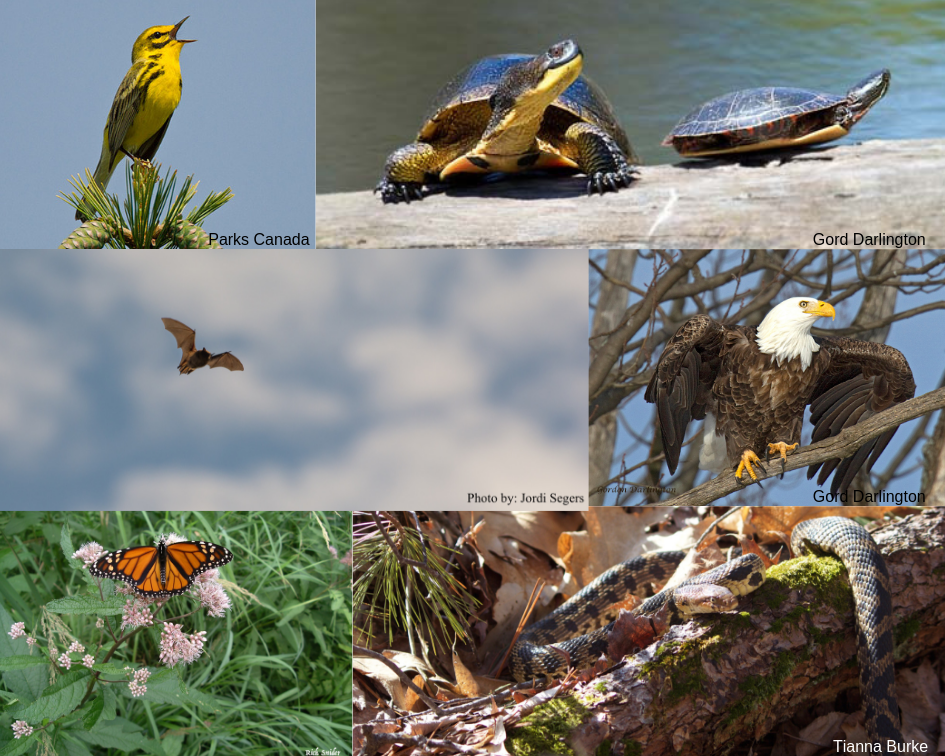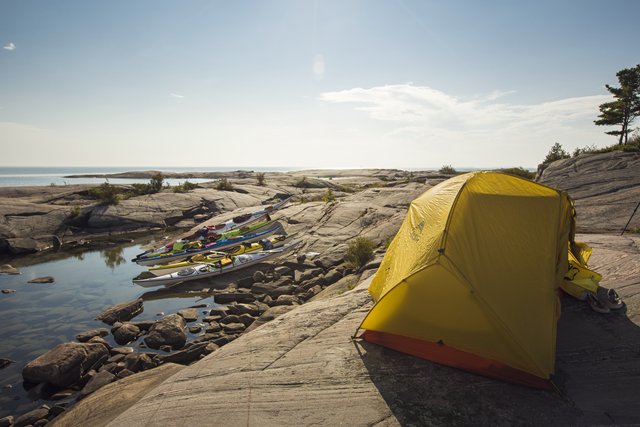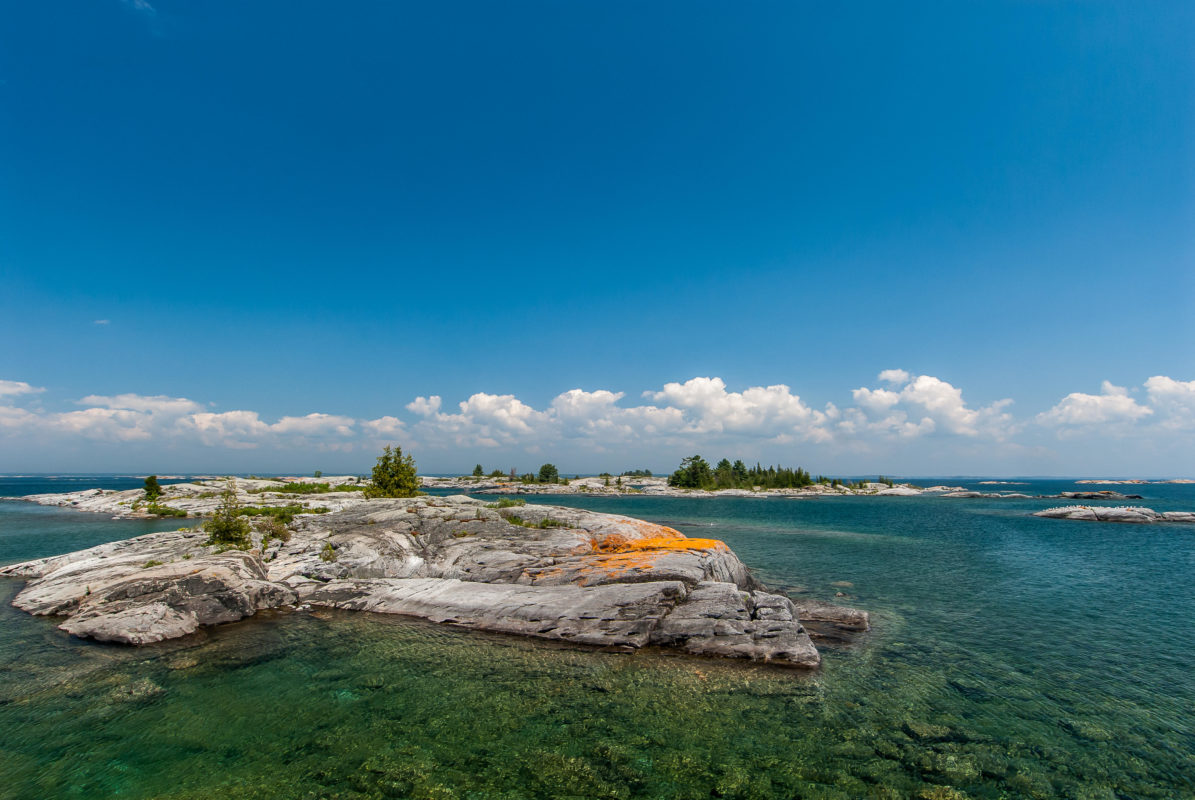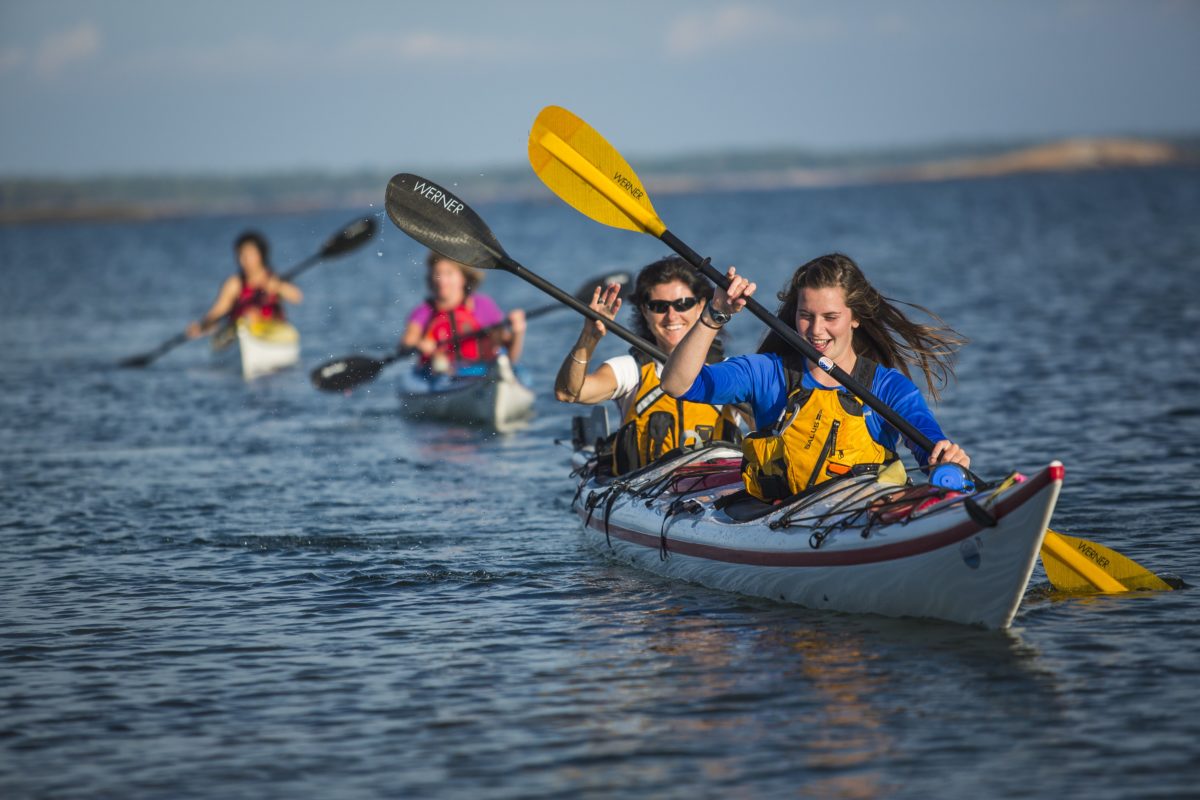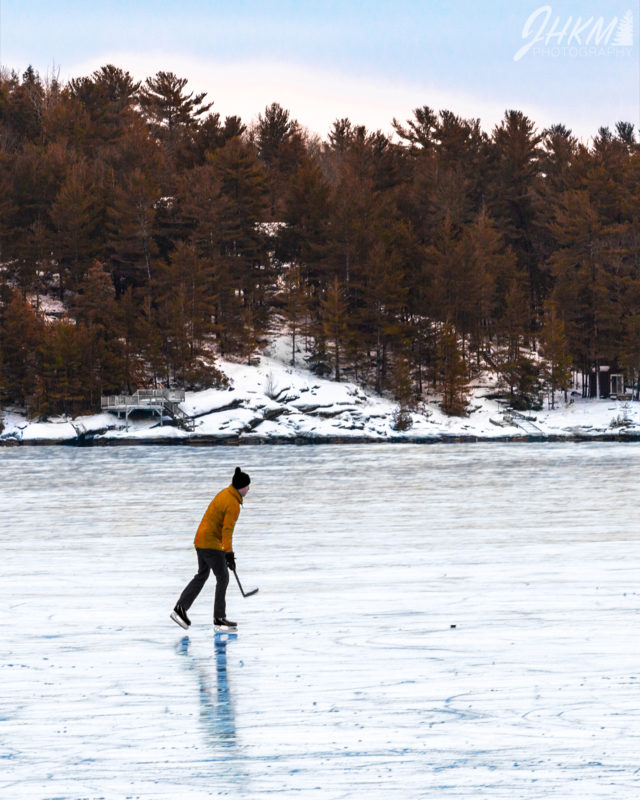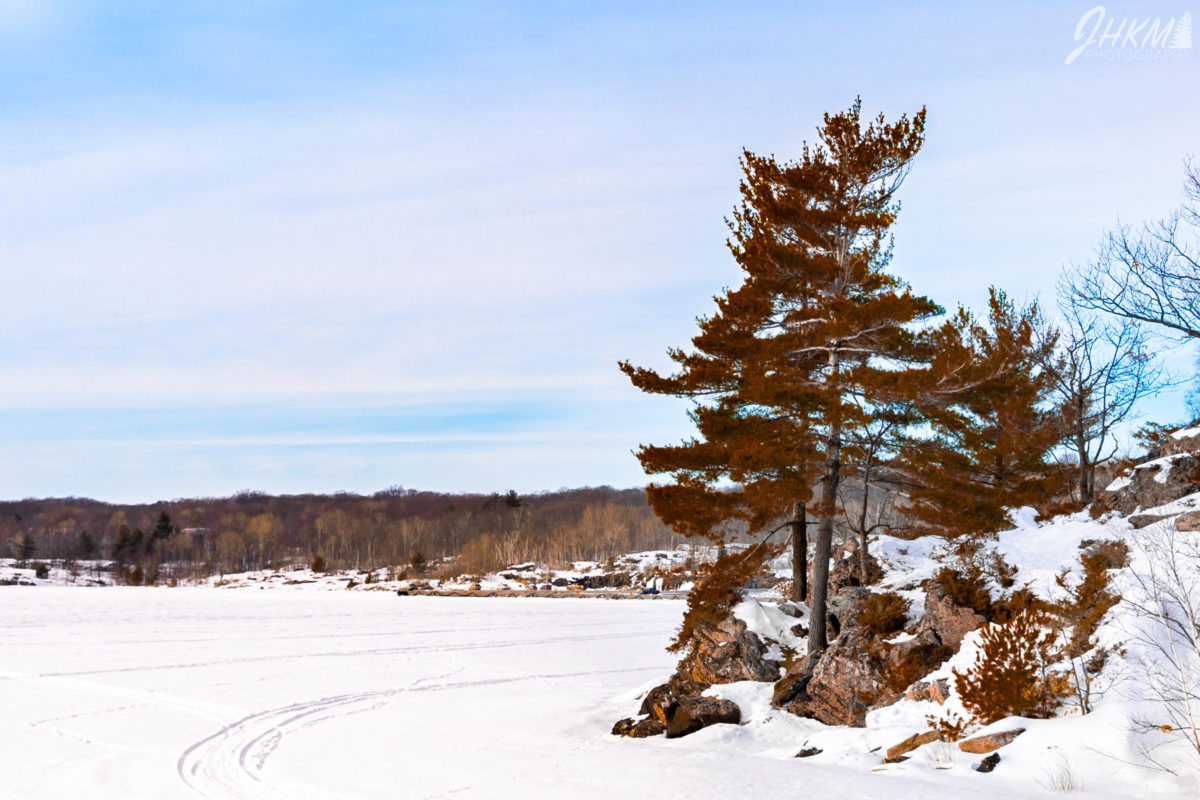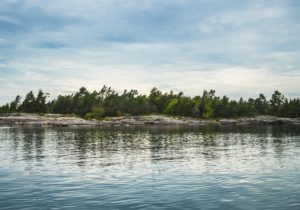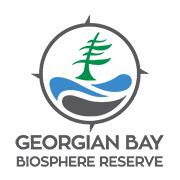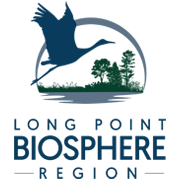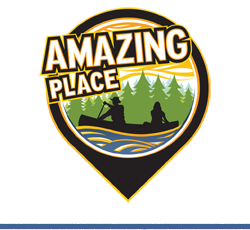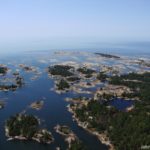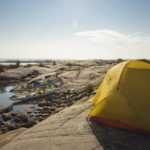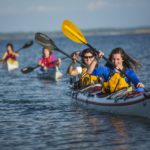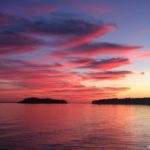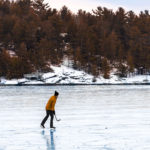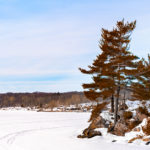Georgian Bay
Deep waters, west wind, white pine and gneiss rock islands: an iconic landscape that’s worth protecting.
Georgian Bay is famous for its rugged shoreline, sand beaches, windswept pines, and clear blue water. This is the largest freshwater archipelago in the world and is locally known as the “30,000 Islands.” An adventurer’s paradise, people travel to Georgian Bay to swim, fish, sail, paddle, cycle, ski and more.
The rocky landscape is billions of years in the making. Geologists have determined these islands are the eroded remnants of the ancient Grenville mountain range that was similar in scale to the Himalayas. Today, all that remains are the once deeply buried portions of these mountains that have risen to the surface over time.
Indigenous peoples are the original caretakers of this land. The biosphere reserve is situated in Anishinaabek territory and is within the Robinson Huron Treaty of 1850. First Nation communities are revitalizing their culture and language and helping Canadians understand relationships between people and nature.
Did you know?
During the last glacial period over 11,000 years ago, Georgian Bay was covered in at least one kilometre of slow-moving ice. As the ice melted, rocks and boulders were dragged and dropped into new areas, leaving behind marks and scrapes, called chatter marks that you can see in the smooth surface of the rock. Cobblestones and sand were left in pocket beaches along today’s shores.
Species at Risk in the Spotlight
Eastern Georgian Bay is home to more than pine trees, lichens and fish—there are over 1,100 native plant and animal species in the region. Currently, 50 species are “at risk” in the Georgian Bay Biosphere Reserve including the iconic Eastern Foxsnake, Bald Eagle, and Monarch Butterfly. Leave only footprints and see the amazing flora and fauna that also call this place home.
